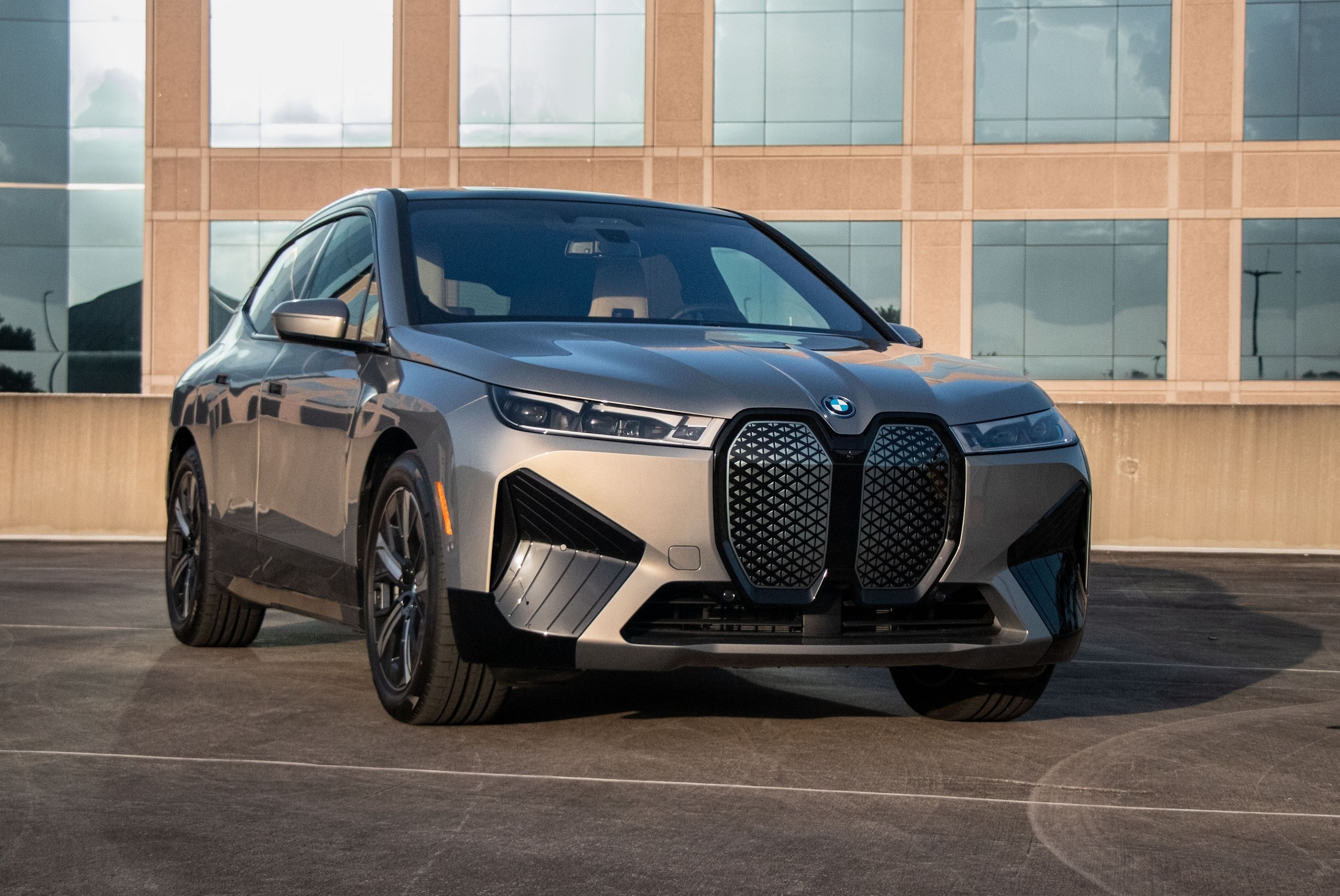
When the BMW iX Flow with E-Ink technology was unveiled at this year's Consumer Electronics Show, the world was stunned by its ability to change the shade of its body on the fly. The Bavarian company explained that this technology makes use of a special wrap as thick as a weighty sheet of paper which reacts to a series of electronic pulses to alter the color right before your eyes.
Expanding on this technology on Jay Leno's Garage is BMW Engineering and Emission Test Center Vehicle Analyst, Markus Brandly. He explains that with this ability to adjust the shade from light to dark, the car's thermal properties will change. This means that in cold weather, a darker shade can be opted for to attract more light while on warmer days, the brighter color can reflect light.
Brandly adds that E-Ink is not a new technology per se but the iX Flow represents the first time it has been applied to a vehicle. The system consists of a foil that employs millions of micro-capsules housing clear fluids of electrically charged pigment. In this case, the E-Ink utilizes a two-ink system of white and black.
The corresponding microscopic electric field brings the required ink particles to the surface which is what results in the change of color. In doing so, the iX Flow can change from black to white and all the shades in-between. Brandly reiterates that this technology is not the same as paints that react to the light such as pearlescent and iridescent finishes.
Although the technology is very advanced, Brandly states that the E-Ink's electric consumption is next to nothing and it does not generate any heat during its operation. Once the surface reaches its desired shade, the consumption of electricity comes to an end. He also explains that the foil does not employ any wires but the E-Ink does use a top layer of protective film to protect the wrap from the forces of nature.
The idea behind the BMW iX Flow was devised by BMW Research Engineer Dr. Stella Clarke who came up with the concept after analyzing how the film was applied to E-readers. After a lengthy prototype design process, Clarke and her team were able to apply the wrap to a production-spec car.
While the E-Ink does seem like a gimmicky feature, Brandly argues that it has clear advantages. He explains that owners would ideally be able to set the shade of the color to reflect the battery status of the car. It can also be used as a beacon in a busy parking lot by making the shades of the color flash, thus aiding the owner in locating their vehicle.
Leno perceptively notices that the wheels can also change color. How is this possible if no wires connect the part to the rest of the car? Brandly explains that this is because each wheel has been fitted with an independent battery pack which the team charged-up before putting it on display.
The E-Ink on the iX Flow is controlled by an app on Brandly's iPhone, not too unlike the Digital Key used to unlock modern BMWs. With this, you can control the different patterns that have been pre-programmed into the foil. It can simply make the car black or white or initiate an ensemble of flowing colors throughout the surface. Right now, the wrap is only applied to the exterior of the car but interior applications, among other possibilities, are on the table.
Mind you, the application of the E-Ink wasn't as simple as applying a vinyl wrap because the foil does not have flexibility. For this reason, Dr. Clarke and her team had to shape the two-dimensional layer to each three-dimensional panel individually. Considering that there are no straight lines on the body of the iX, the process was complex and required many hours of installation. To get this done, each section was custom-made through computer-aided design and special algorithms.
Brandly says that the response from consumers and fans after it took to the stage at CES was overwhelming. He also explains that the technology is not just limited to black and white shades but can also adopt a spectrum of colors. The team opted for a two-ink system because the design and the effect of this feature are so exciting that adding more colors might not have advanced the effect.
The big question is, when will we get to see the E-Ink technology available to the public as an option for future BMW products? We are told that this feature is still in its prototype stages and that future development has not yet been made clear. Brandly adds, "I think BMW puts a lot of emphasis into innovation, in artistic expression, and in the whole entire experience of driving a BMW."
If it does make it to market, how much can we expect the E-Ink to cost? As the technology is still in its early stages of development, it is hard to put a dollar amount on it. The determination of cost on a mass level is still uncertain. Leno argues that the same thing was said about ABS decades ago but this eventually made it into mass-produced cars a few decades down the line.
